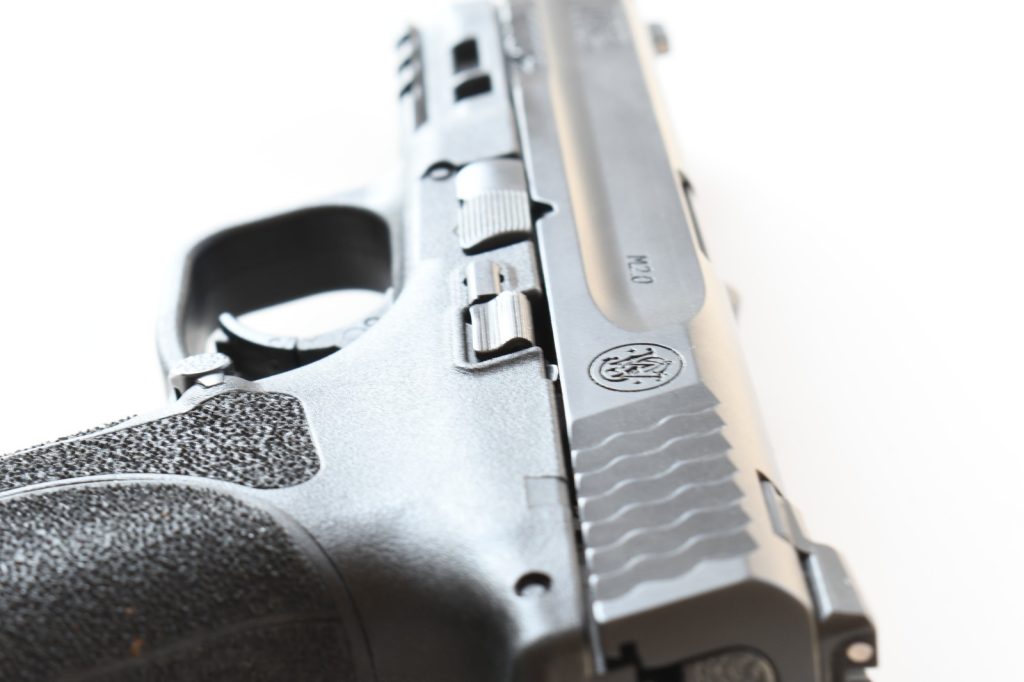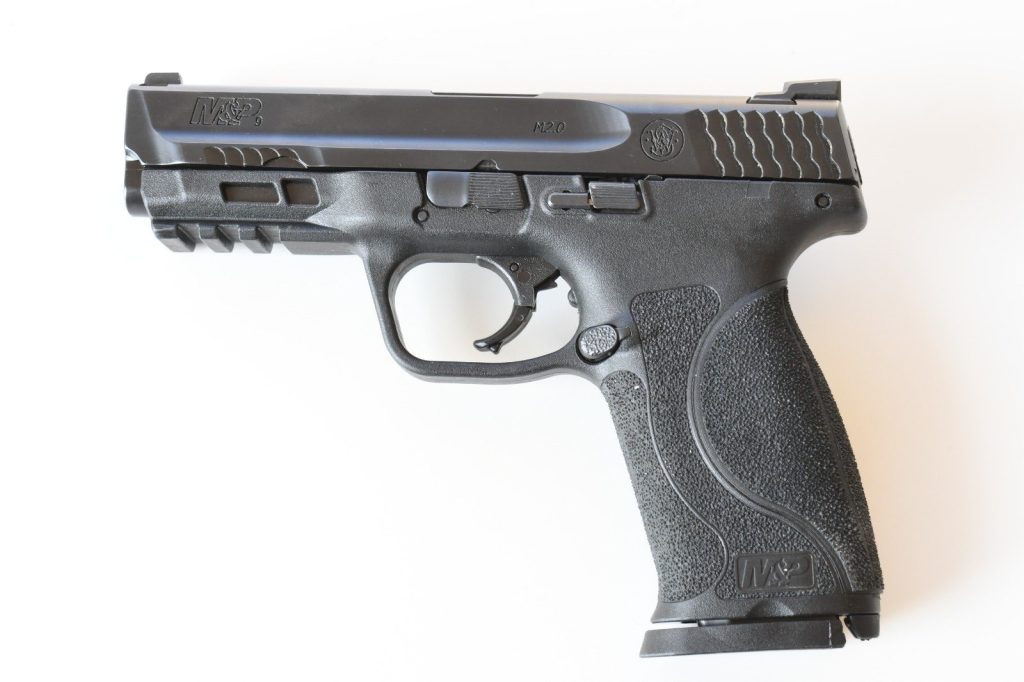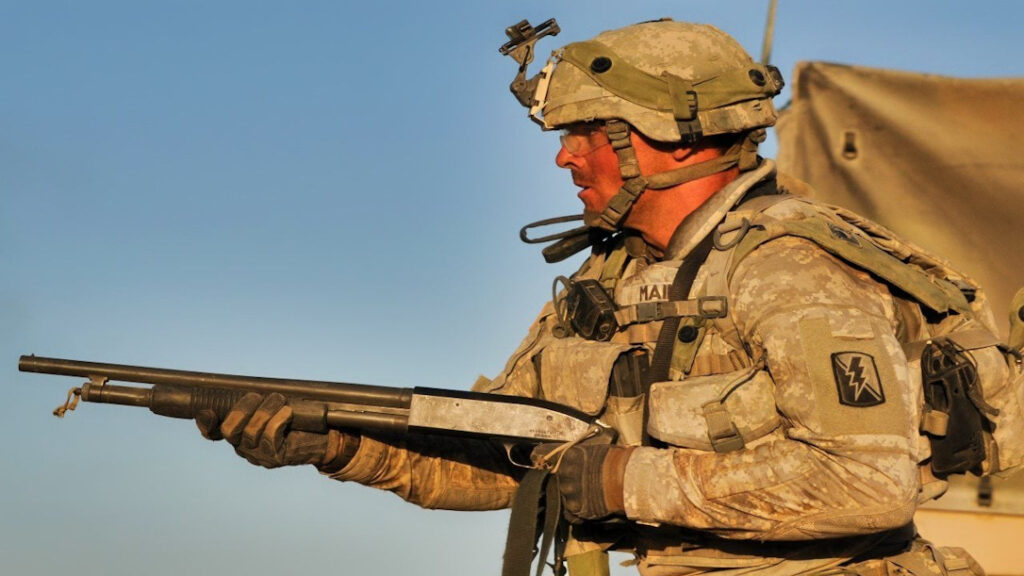Smith And Wesson M&P 2.0 9mm First Impressions
Smith and Wesson’s M&P 2.0 handgun isn’t exactly new. But in the market of hyper competitive striker-fired polymer framed pistols, the modern M&P product line as we know it remains strong as part of the “old guard” of striker fired polymer guns. The product line has certainly had its shares of good and bad moments (the later models of the original generation come to mind). Rest assured, all of those issues were ironed out when Smith and Wesson rolled out the second generation with the M&P 2.0. Other than reviewing the all-metal version elsewhere, I am actually not too familiar with this family of handguns, but that 2.0 Metal left a good impression on me and I wanted to learn more about them by examining the standard polymer framed duty sized model. This 9mm pistol also has a 4¼ inch barrel and 17-round magazines like its all-Metal sibling.
There are two main reasons the gun has been on my radar. The first is because several people whom I consider serious pistols shooters switched to the M&P 2.0 after moving away from other proven designs. The second is the pistol’s 18 degree grip angle, texture and ergonomics–all which left a very positive impression on me. Frankly, I’ve never had an issue shooting any full size Glock with their (in)famous 22 degree angled pistol grip, but I’d like to broaden my horizons. The exact M&P 2.0 I am reviewing is a “new old stock” earlier M&P 2.0 that comes with the hinged curved trigger and does not have the prominent slide serrations. On the flip side, I took it home for a reasonable price considering this exact gun was the counter/demo model. This police supply store was also basically giving away left handed Safariland 6000 series RDS + WML duty holsters that fit this handgun for $10, so I helped myself to one.
MY COMMENTARY, LIKES AND DISLIKES
The M&P 2.0’s grip texturing out of the box feels about perfect. It’s coarse enough that it bites into the palm of the shooting hand, but it will not lacerate your skin either. As far as a duty grade gun’s out of the box texturing, I think this one is a homerun. I felt the same way when I reviewed the M&P 2.0 Metal too.
Advertisement — Continue Reading Below

The M&P 2.0 “standard sized” form factor is interesting. This version includes 17-round magazines and has a full-size grip. Since its barrel length is only 4¼ inches, its overall shape is reminiscent of the classic Colt Combat Commander profile. It also immediately reminded me of my Glock 45, which is the gun I carry most frequently. This trim of M&P 2.0 isn’t specialized match gun, so I’m not worried about every extra millimeter of barrel length to let a round’s propellant charge develop enough to cycle the slide and make power factor. Like the Glock 45 or a Colt Combat Commader for that matter, the standard M&P gives you the shooting and handling of a full size gun without “taking up too much space.”
I’ve only fired a little over 100 rounds of 9mm through my gun so far (124-grain Fiocchi FMJ and South African PMP 124-grain FMJ). Besides that, I shot 10 rounds of American Eagle 147-grain FP bullets at 25 yards (along with the Fiocchi). While neither shot string was much to talk about, the 124-grain ammo printed considerably better. I shot my gun out of the box for this article, and honestly the front sight needs to be drifted. Regardless of distance, nearly everything was printing hard right. This isn’t the fault of the gun itself. On the flip side, Smith and Wesson designed the slide with front and rear dovetails, providing a higher level of iron sight adjustability than its “rival”, the Glock.
Advertisement — Continue Reading Below
Speaking of sights, I appreciate that the stock iron sights on the gun are made out of metal. I also like that the height these sights seem to be regulated for 124-grain ammo hitting dead on with a center hold at 25 yards. However, I really don’t like the fact that they are of the classic 3-dot arrangement (2 white dots on the rear sight, 1 white dot on the front). I think that set-up is outdated and counterproductive because it makes shooting with target focus at speed a little more confusing with regards to one’s visual processing. With all three dots being the same size and color, tracking the sights becomes slightly more challenging. This isn’t to say that the standard sights aren’t serviceable. They are. But with target focus especially, a color other than white like bright orange or green can really pop out and help the target-focused sight picture. Think of it as a pseudo mounted red dot that one looks through and covers the target with. In the grand scheme of things, all it takes is some paint or a pair of aftermarket sights (God knows the M&P has an ample selection). And milling the slide out for a mounted red dot is always an option. Of course, Smith and Wesson sells the same gun with their CORE optics-ready system as an option too.
One quirk that seems to be germane to this family of pistols is that their ambidextrous slide stop levers can be somewhat stiff. After asking around, it isn’t just a specific issue with my individual specimen and this is something that the M&P 2.0 appears to be known for.
THE M&P AND THE AFTERMARKET
Because the M&P pistol family is part of the old guard of polymer-framed striker-fired pistols, it has excellent aftermarket support in terms of all manner of internal and external parts and ancillary gear like holsters. Apex Tactical Specialties might as well be synonymous with “tricked out M&Ps” as this company is well known for the upgraded parts they offer for the M&P 2.0. The best thing that they’re probably known for is M&P aftermarket triggers, for example.
Advertisement — Continue Reading Below
In short, the world of polymer-framed striker-guns is extremely competitive these days and the fact of the matter is that there are tons of great handguns choices available. Those who are more particular about the grip angles of their guns and who are interested in a mature and well-supported platform might take a look at the M&P 2.0 if they haven’t already. As for my own gun, I’m thinking about possibly milling it out for a dot and upgrading the trigger to an Apex to start with.
















